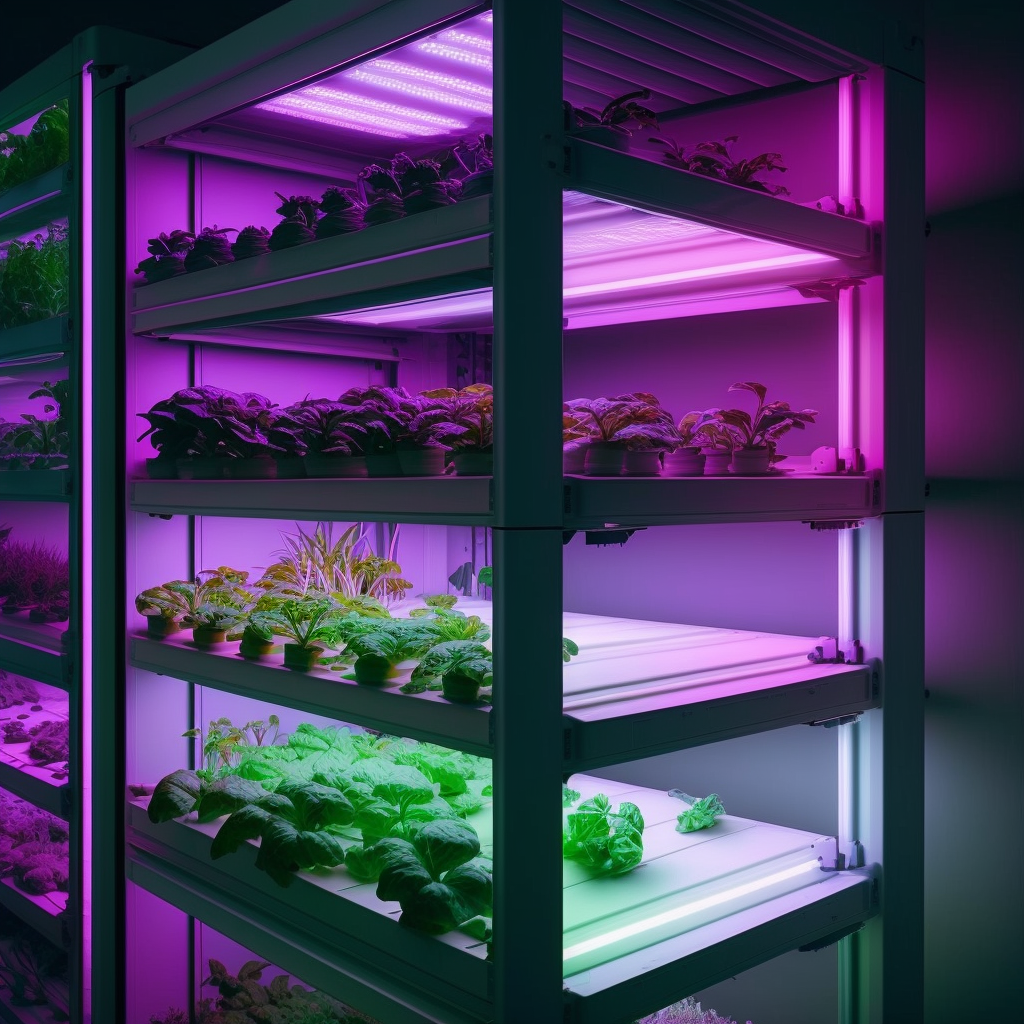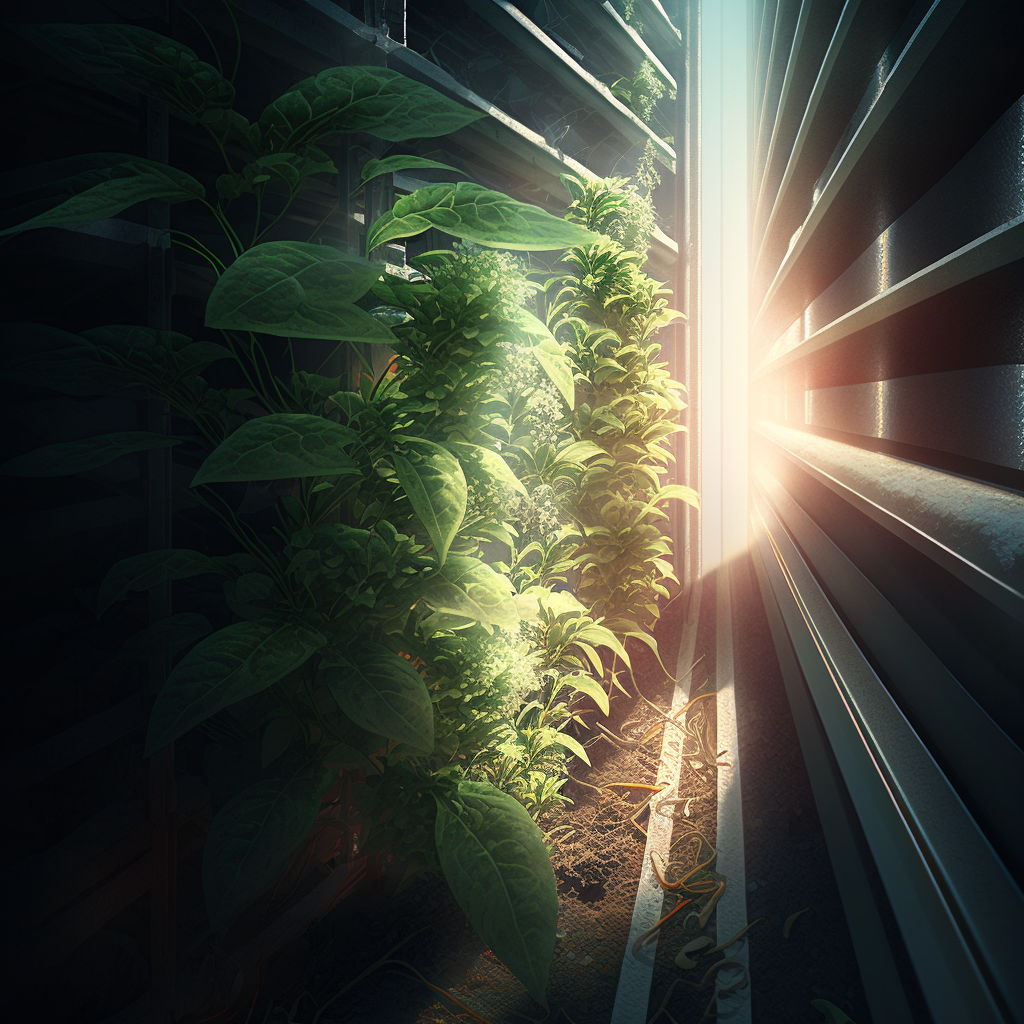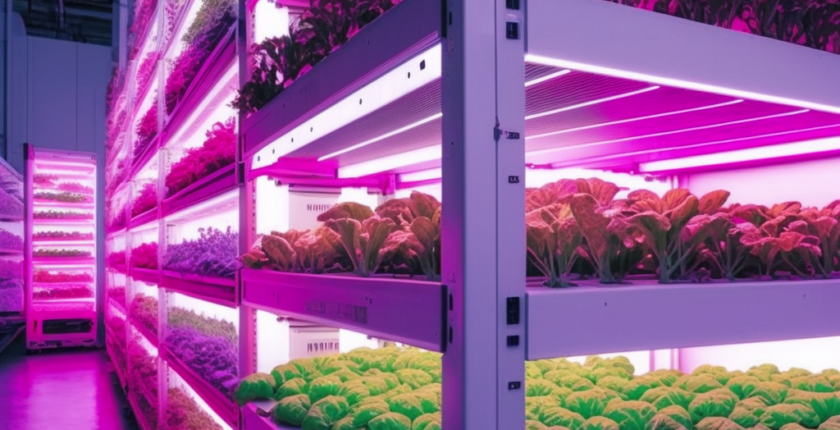Optimizing Light in Vertical Farms: 9 Strategies for Better Efficiency
As one of the key inputs for plant growth, lighting is critical to the success of vertical farms. But as artificial lighting can account for a significant portion of a farm’s energy consumption, it’s important to optimize its use for greater efficiency. In this article, we’ll explore 10 strategies for optimizing light consumption in vertical farms, from natural light to smart lighting systems.
Use natural light
Maximizing the use of natural light is one of the simplest and most effective ways to reduce the energy consumption of a vertical farm. By positioning plants in areas that receive the most natural light and using reflective surfaces to direct light to areas that may not receive as much, vertical farms can significantly reduce their need for artificial lighting. This strategy not only helps to save on energy costs but also provides plants with a natural light source that can improve their overall health and growth. Additionally, using natural light can create a more sustainable and eco-friendly farm, as it reduces the farm’s carbon footprint by decreasing the need for electricity.
 Use energy-efficient lighting
Use energy-efficient lighting
In cases where natural light is not sufficient to support plant growth or to extend daylight hours, the use of artificial lighting is necessary. However, this can account for a significant portion of a vertical farm’s energy consumption. Using energy-efficient LED lights can help reduce the amount of electricity needed to power the farm, as they are more efficient than traditional fluorescent bulbs. Additionally, LED lights can be tailored to specific light spectrums to optimize plant growth, making them a popular choice in vertical farms. By implementing energy-efficient lighting, vertical farms can reduce their energy consumption, lower their operating costs, and increase their sustainability, while also providing plants with the necessary light for healthy growth.
Implement light sensors and controls
Installing light sensors and controls can help vertical farms optimize their energy usage and improve plant growth. Light sensors can detect the amount of natural light available and adjust the amount of artificial light given to plants accordingly. This ensures that plants receive the correct amount of light for their specific growth requirements, preventing over-lighting that can be harmful to the plants and waste energy. Additionally, by implementing controls that turn off lights when they are not needed, such as during periods of natural sunlight or when plants are not actively growing, energy usage can be further reduced. Overall, implementing light sensors and controls can improve energy efficiency and plant growth, while also reducing operating costs and promoting sustainability.
Utilize light-reflective materials
Utilizing light-reflective materials is another effective way to optimize light consumption in vertical farms. By using reflective materials on walls and ceilings, available light can be redirected to areas that might not receive enough light naturally, such as those at the lower levels of the farm. This can reduce the need for additional lighting and lower energy costs. Reflective materials can also create a more uniform distribution of light, improving plant growth and health. Additionally, using reflective materials can create a brighter and more visually appealing growing environment for farm workers and visitors. Overall, utilizing light-reflective materials is a simple and effective strategy for improving energy efficiency and plant growth in vertical farms.
Optimize plant density
Optimizing plant density is a key strategy for improving light consumption in vertical farms. By maximizing the number of plants per square meter, the available space is used more efficiently, and each plant can receive more natural light. This allows plants to grow more closely together while still receiving the required amount of light, reducing the need for additional artificial lighting and lowering energy costs. By packing more plants into a smaller space, vertical farms can also increase their crop yields and improve profitability. However, it is important to strike a balance between optimizing plant density and ensuring adequate growing space for each plant. Overcrowding can lead to reduced air circulation, increased disease risk, and lower crop quality. Overall, optimizing plant density is an effective way to improve light consumption and energy efficiency in vertical farms, while also increasing crop yields and profitability.
Implement light shelves
Implementing light shelves is a useful strategy for improving light consumption in vertical farms. Light shelves are installed in such a way that they direct natural light towards the lower tiers of the farm, which might not receive as much natural light as the upper tiers. By directing natural light towards the lower tiers, the need for artificial lighting in those areas can be reduced, which in turn can help lower energy costs. Additionally, by optimizing the amount of natural light that reaches each plant, growth and quality can be improved. Light shelves can be made from a variety of materials, such as reflective surfaces, and can be customized to fit the specific needs of a vertical farm. Overall, implementing light shelves is an effective and efficient way to improve light consumption and promote sustainable energy usage in vertical farms.
 Use light pipes
Use light pipes
Using light pipes is an innovative way to optimize light consumption in vertical farms. Light pipes are tubular devices that use mirrors or lenses to reflect and direct natural light into the farm. They are particularly useful for areas of the farm that receive less natural light, such as those at the bottom of the farm or those located in shaded areas. By directing natural light to these areas, the need for additional artificial lighting can be reduced, which can lower energy costs and improve sustainability. Light pipes are an especially useful solution for farms located in areas with limited access to natural light, such as urban environments or regions with frequent cloud cover. Additionally, because they rely solely on natural light, light pipes provide a more sustainable solution for vertical farms, reducing their carbon footprint. Overall, using light pipes is an innovative and effective way to improve light consumption and promote sustainable energy usage in vertical farms.
Use plant-based lighting
Using plant-based lighting is an innovative strategy for improving light consumption in vertical farms. Research suggests that certain wavelengths of light can promote photosynthesis in plants and boost their growth. By using light-emitting diodes (LEDs) that emit specific wavelengths of light, known as plant-based lighting, vertical farms can potentially reduce the need for as much lighting power. Plant-based lighting can also be tailored to specific plant varieties and growth stages, providing more targeted and effective lighting for plants. Additionally, plant-based lighting can improve plant quality and yield, as well as energy efficiency, making it a cost-effective solution for vertical farms. Although plant-based lighting may require a higher initial investment than other lighting solutions, the long-term energy savings and increased plant growth and health can make it a worthwhile investment for vertical farms. Overall, using plant-based lighting is an innovative and effective strategy for improving light consumption and promoting sustainable energy usage in vertical farms.
The Summary
- Use natural light: The most obvious way to reduce artificial lighting use is to maximize the use of natural light. This can be achieved by positioning the plants in areas that receive the most natural light and using reflective surfaces to bounce light around the growing area.
- Use energy-efficient lighting: If artificial lighting is necessary, use energy-efficient LED lights to reduce the amount of electricity required to power the farm. LED lights are more efficient than traditional fluorescent bulbs and can be tailored to specific light spectrums to optimize plant growth.
- Implement light sensors and controls: By installing light sensors and controls, you can adjust the amount of light given to plants based on their needs. This can prevent over-lighting, which wastes energy and can be harmful to the plants.
- Utilize light-reflective materials: Using reflective materials on walls and ceilings can help to bounce light around the growing area, increasing the overall amount of available light for the plants. This can reduce the need for additional lighting and lower energy costs.
- Optimize plant density: By maximizing the number of plants per square meter, you can create a more efficient use of space, allowing each plant to receive more natural light. This can reduce the need for additional artificial lighting and lower energy costs.
- Implement light shelves: Light shelves can be installed to direct natural light towards the plants in the lower tiers of the vertical farm. This can reduce the need for artificial lighting in those areas and lower energy costs.
- Use light pipes: Light pipes are tubular devices that reflect and direct natural light into the vertical farm. They can be particularly useful for areas of the farm that receive less natural light, reducing the need for additional artificial lighting.
- Use plant-based lighting: Some research suggests that using LEDs that emit specific wavelengths of light can promote photosynthesis in plants. By using plant-based lighting, vertical farms can potentially reduce the need for as much lighting power.
- Use smart lighting systems: By using smart lighting systems that automatically adjust the amount and timing of lighting, vertical farms can optimize energy usage and reduce waste. These systems can be programmed to turn on and off based on the plants’ needs and the time of day, ensuring that energy is only used when necessary.

